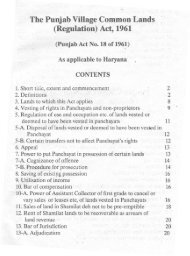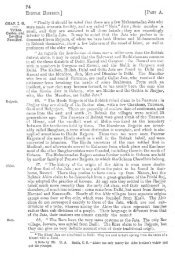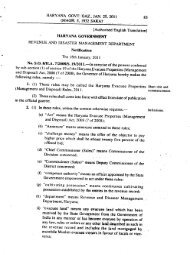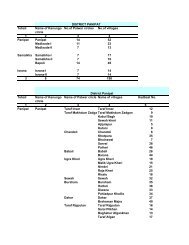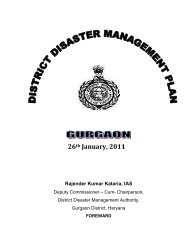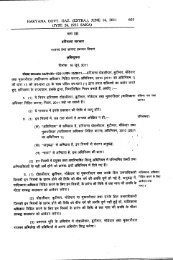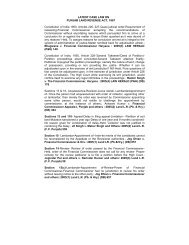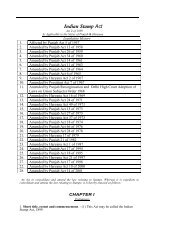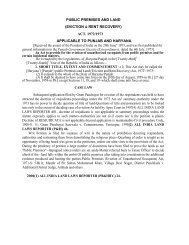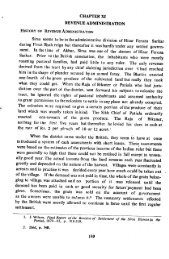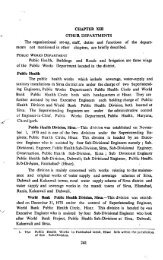chapter - ix - revenue and disaster management department, haryana
chapter - ix - revenue and disaster management department, haryana
chapter - ix - revenue and disaster management department, haryana
Create successful ePaper yourself
Turn your PDF publications into a flip-book with our unique Google optimized e-Paper software.
<strong>and</strong> bellmetal work <strong>and</strong> embroidery work were common intheBhiwanitahsil.Besides,four spinning <strong>and</strong> weavingmills werealso in existencein Bhiwani in1940.At the time India achieved independence in 1947, Dadri was famousfor stonecarving, Loharu for the manufacture oflocks, bangles<strong>and</strong> iron pans,<strong>and</strong> there were three large-scaleindustrial units,i.e. twotextilemillsatBhiwani<strong>and</strong> one cement factory at Charkhi Dadri. The Muslim artisans left thiscountry consequent upon Partition <strong>and</strong> the industrial art of stone carving <strong>and</strong>bangle makini5received a serious set-back.While the livelihood pattern remains agro-based, a diversification ofpursuits is visible,though at a slowpace. After the formation of the neWState of Haryana, the infrastructure for the development of industries in thisareahasbeencreated. Variousincentiveshavebeengiventothepromising entrepreneursto establish newindustrial units. The result isthat large industrialactivity isnow possible <strong>and</strong> a number of newunits arefast coming up. Nowthe Bhiwani district enjoys a dominating position in the textile <strong>and</strong> stonecrushing industries. During November 1, 1966 to March 31, 1977, the numberof small-scale units increased from 118 to 518 <strong>and</strong> the number of largescaleunits increased from 4 to 8.Changes are visibleinthe entire structure ofthe economy <strong>and</strong> in thenear future the livelihood pattern of the working people is likely to undergorapid diversitywith the result that thepressure ofpopulation on l<strong>and</strong> m"ywelldecre~se.The economy ofHaryana is predominantly agricultural, with 82.3percent of the population (according to 1971 census) living in rural areas. Aleveloffull employment canbeachievedonlyafter atotal greenrevolution <strong>and</strong>a complete net-work ofindustrial structure, whichinturn willenablethe diversionof surplus labour force from agriculture to industry. In the Bhiwanidistrict, the rural population ismore than 86per cent of the total population.Out ofthe total population of7,61,953, only 2,07,235 (27.20 per cent) formedthe work force, ofwhich 1,48,572 (19.5 per cent)wereengagedinthe conventionalsector <strong>and</strong> the remaining 58,663 (7.7 per cent) were engaged in otherpursuits. In the absence of data regarding unemployment, the assessment ofemployment situation canonly begathered from the working of employmentexchanges in the district.Employment Exchanges.-The State Directorate of Employment runs



